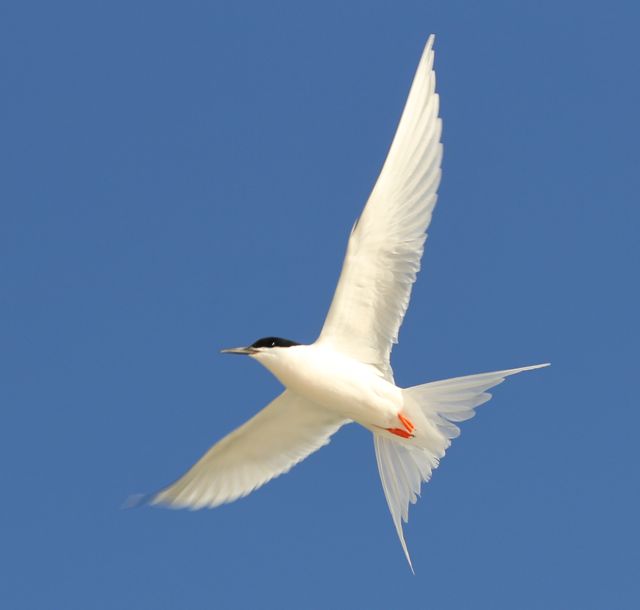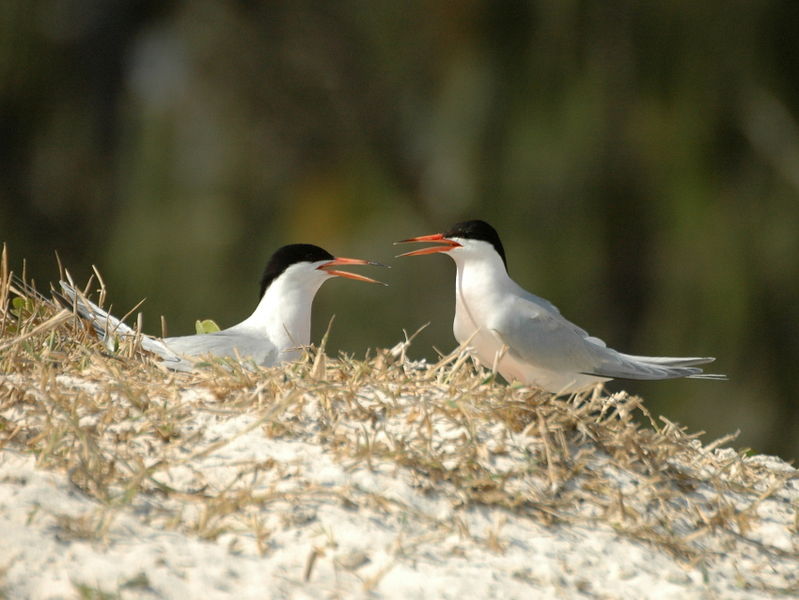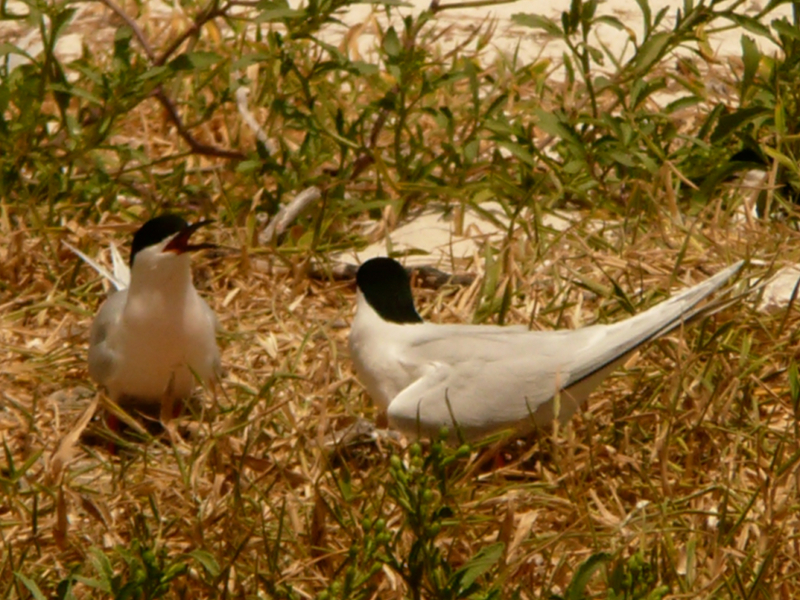Colours
Distinguishing features
Its thin sharp bill is black, with a red base which develops through the breeding season, and is more extensive in the tropical and southern hemisphere races.
It is shorter-winged and has faster wing beats than Common or Arctic Tern. The upper wings are pale grey and its under parts white, and this tern looks very pale in flight, like a small Sandwich Tern, although the outermost primary flight feathers darken during the summer.
The adults have very long, flexible tail streamers and orange-red legs.
In summer, the underparts of adults take on the pinkish tinge which gives this bird its name. (Wikipedia)
Size
- From 33 cm to 36 cm (Length of specimen)
Wingspan
- From 67 cm to 76 cm
Synonyms
Distribution
Local abundance
- Lady Elliot Island: They roost on the lighthouse side of the island.
Audio recordings
Diet
As with other Sterna terns, Roseate Tern feeds by plunge-diving for fish, almost invariably from the sea; it is much more marine than allied terns, only rarely visiting freshwater lagoons on the coast to bathe and not fishing in fresh water. It usually dives directly, and not from the "stepped-hover" favoured by Arctic Tern. The offering of fish by the male to the female is part of the courtship display.
Unusual for a tern, the Roseate Tern shows some kleptoparasitic behaviour, stealing fish from other seabirds, at British colonies most often from Puffins. This habit greatly increases their food collecting ability during bad weather when fish swim deeper, out of reach of plunge-diving terns, but still within reach of the deeper-diving Puffins. (Wikipedia)
Web resources
References
- Simpson, K., N. Day and P. Trusler (2004). Field Guide to Birds of Australia: 7th Edition Penguin Group (Australia), Camberwell, Victoria.




